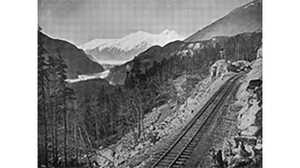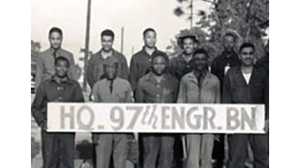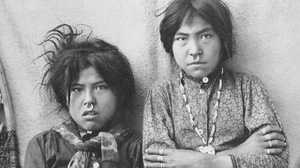Race and the Army During World War II
When the U.S. military decided to assign three African American engineering regiments to the Alaska Highway project, it departed from its usual segregationist policies. Since the Civil War, African American and white units had been kept separate, with African American units serving under the command of white officers.

Racist Era
The military's view toward African Americans during World War II reflected that of the wider American culture. According to a report commissioned by the Army War College, African Americans were "careless, shiftless, irresponsible and secretive" and "unmoral and untruthful." Commanding officers were instructed to "handle" their African American subordinates "with praise and by ridicule." The accepted viewpoint of the day was that African American soldiers were not equally capable as -- and would require more intensive leadership than -- their white counterparts. Furthermore, the military believed black soldiers were unsuited to serve as officers.
Tight Control
Stereotyping and discrimination meant that most African American soldiers were never placed in active combat roles; they were assigned mostly to labor-intensive service positions with little responsibility. They were often issued less equipment and fewer supplies than their white counterparts. On the Alaska Highway project, the military took steps to position African American troops away from towns and cities in order to control the reactions of locals.
Pearl Harbor Hero
During the Second World War, however, African Americans found opportunities to defy these biases. One such example occurred on December 7, 1941, when Pearl Harbor was attacked by the Japanese. Serviceman Dorie Miller dragged his commanding officer to safety and, bereft of any formal combat training, manned a machine gun, shooting down several Japanese planes. Miller was awarded the Navy Cross for his bravery on May 27, 1942, becoming one of the first recognized heroes of World War II.
Tuskeegee Airmen
The Tuskegee Airmen broke through another of the military's barriers. During World War II, the United States Air Force began training African Americans to be pilots. The Division of Aeronautics of Tuskegee Institute, the school once led by Booker T. Washington in Tuskegee, Alabama, ran the training. By war's end, nearly 1,000 African Americans had graduated from the Tuskegee Institute program; half of these graduates saw combat.
Battle of the Bulge
Combat brought another opportunity to African American soldiers between December 1944 and January 1945, when the U.S. Army desegregated its units for the first and only time during World War II, at the Battle of the Bulge. Roughly 2,500 African Americans fought alongside white soldiers to repel the Germans in a wintry, miserable sequence of weeks. In the aftermath of the battle, the integration effort was well received, and the African American soldiers were evaluated as having done "well."
Official Recognition
By the end of the war, more than 695,000 African Americans were serving in the U.S. military. African American soldiers constantly felt the need to prove themselves, to gain respect at home. "There was a real belief that by shedding one's blood, one could achieve first-class citizenship," explained historian Alvin Schexnider. The integration of the forces during the Battle of the Bulge and the employment of African American engineers on the construction of the Alaska Highway, among other events, helped prove African Americans' abilities, leading eventually to President Truman's depression of the military in 1948.







